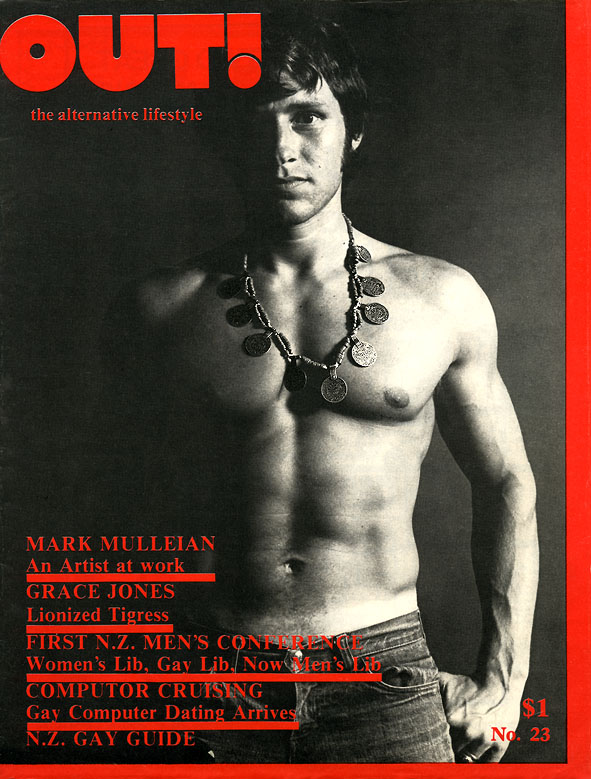 |
|
|
|
|
|
|
|
|
|
|
|
|
|
|
|
The
day
that nature
is
proven
a fool
is the day
that intellectual
endowment
becomes obsolete
to our undeserving
sensibilities.
|
|
|
|
|
|
|
|
|
By
Mulleian
|
|
|
|
|
|
|
 |
|
|
|
|
|
|
|
|
 |
|
|
|
|
|
|
|
OUT
Magazine
(New
Zealand)
1979
|
|
|
|
|
|
|
|
|
|
|
|
|
|
It
is not
often
that a single individual can stir up
such controversy, not only in challenging the art establishment
but also in regards to his views on
homosexuality. As an already established artist in
the
U.S. since 1969,
his political
views and his strong antinuclear,
environmental, and gay rights
positions helped open the doors
in both the gay and straight cultures. By bridging
the gap between the homosexual
and heterosexual communites, Mulleian has helped to promote tolerance
and understanding through his work and
through the media for over forty years on a national
and international
scale. |
|
|
|
|
|
|
|
|
|
|
|
In
January 1973,
The Advocate (a national political gay newspaper, the biggest of its kind
in the U.S.) published one of the biggest feature
stories on an individual of its day. Written by freelance writer
Brian Jennings,
the article drew national
attention and generated fan mail throughout the U.S.
The cover
story was two
full pages dedicated to Mulleian's art and
lifestyle, and his controversial
perspective relating
to human rights and individual sexual expression.
It was in the area of homosexual
expression that Mulleian's outspoken views
drew the attention of the FBI to the front
door of the artist's studio in an investigation into his controversial and
challenging commentary on aspects of fundamental social values during the
Nixon era and shortly after J. Edgar Hoover’s death in 1972. All this
took place while the homosexual culture in the United States was still underground. |
|
|
|
|
|
|
|
|
|
|
|
|
Despite
the artist's outspoken observations of the national scene, his media attention
continued to climb for over four decades. This attention came not only from
mainstream media but also from the media of a newly emerging counterculture
that was finding its voice in what would later come to be thought of as
a bridge between the radical sensibilities of North Beach, (radical as perceived
by the status quo), and the dawning of a new age of personal expression
and sexual freedom of the 70s. He was thought by many to be ahead of his
time. Mulleian's art and his avant-garde views created a unique relationship
with the media of two cultures, a relationship that was not only unprecedented
but, indirectly, a testimony to the universality of his work. |
|
|
|
|
|
|
|
|
|
|
|
Two
weeks after the Advocate story broke, a similar two-page cover feature would
appear in the European equivalent of the Advocate, the German magazine Him,
a monthly periodical reaching a wide audience in Belgium, Denmark, England,
Italy, the Netherlands, Austria, Switzerland, Luxembourg and the United
States. Mulleian was twenty-three years old. |
|
|
|
|
|
|
|
|
|
|
|
Today
Mulleian continues raising public consciousness on nuclear and environmental
devastation through his powerful paintings and his comments and controversial
views relating to the intricate ecologically assembled safeguards provided
by nature. His unique perspective on the homosexual and bisexual community’s
role in the Human Population Equation has aired on Free Speech TV, the Direct
TV network and on approximately 183 national cable networks since 2004. |
|
|
|
|
|
|
|
|
 |
 |
 |
 |
 |
 |
 |
 |
 |
 |
 |
 |
 |
 |
 |
 |
